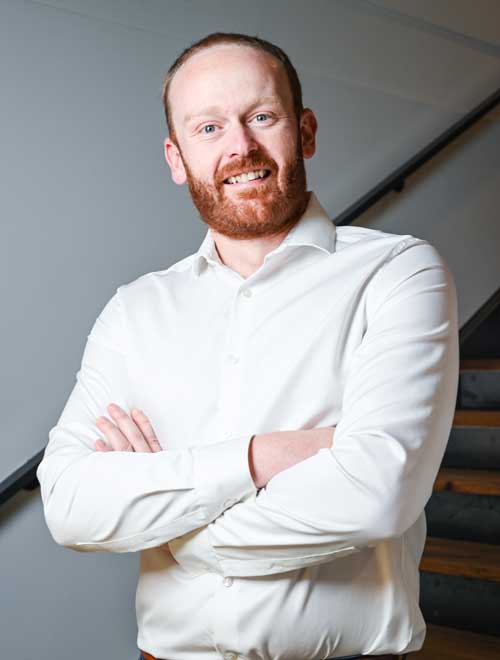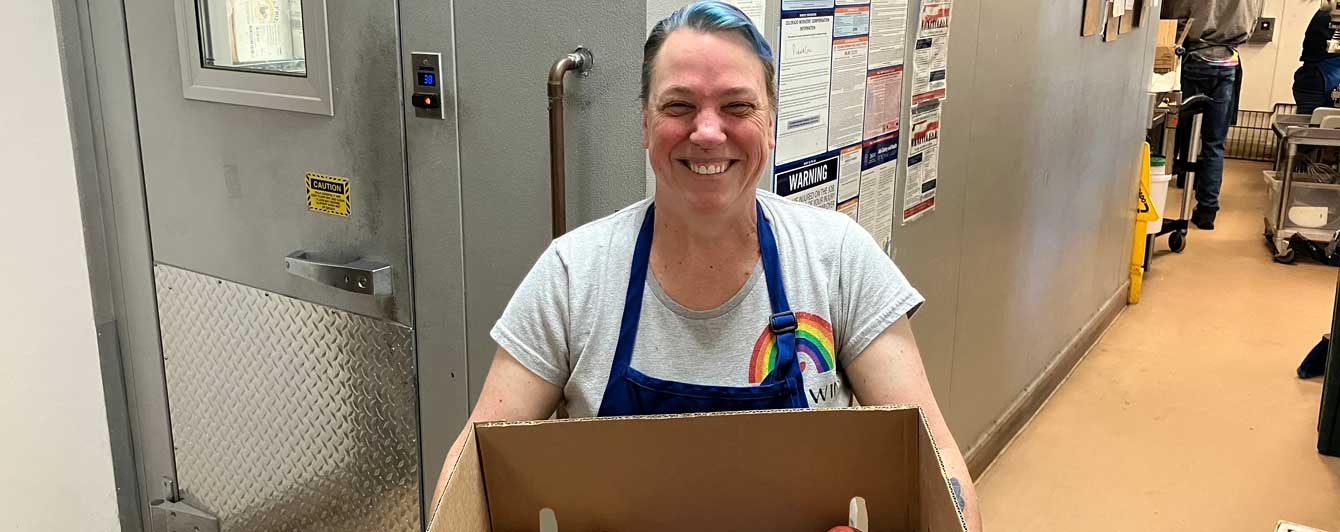
Donors step up when you make them feel integral to your mission.

Giving Magazine
For those who drive change — not watch it. Join the top 1%.
This article was originally published in Giving Tomorrow magazine.
We try to be really intentional in how we communicate with donors to let them know that we do consider them partners in this work, and here’s where that partnership is going; here’s where their gifts are going; here’s where we’re able to turn their gifts into something that’s really impactful.
Coal Creek Meals on Wheels has grown pretty significantly, and philanthropy has been a big driver in that growth. Our contributed revenue budget has doubled over the last four years, and that’s in large part been due to an increase in individual donors.
I think there’s a few reasons. One, just the commitment to philanthropy on our end. Brittany, our current director of philanthropy, is this organization’s first full time director of philanthropy. Previously my predecessor did the majority of the fundraising work for our organization, which is challenging for an executive director to take on. … We’ve also really invested in brand awareness, and investing in telling people what we’re doing and inviting folks to be a part of that journey.
Certainly where we’ve seen the most growth over the past four years is specifically in individual donors and seeing that commitment to our organization from individuals in our communities that we serve. And I think there’s a couple things driving that.
I think that certainly there’s been a heightened awareness, in my opinion, around food insecurity recently, and how food insecurity has really impacted folks. I think the pandemic certainly elevated that awareness, and I think the pandemic certainly drew more attention to the food insecurity we see in our communities, because more people were facing food insecurity than ever before, and folks became more aware that these are your neighbors who are feeling this; these are folks who are employed, these are folks who have kids that your kids are going to school with. So I think the exposure to food insecurity was more obvious, and I think that led to an increase in philanthropy toward organizations doing direct work with food insecurity.

I think we’ve done a few things that have been really impactful. We’ve done more than just the yearly impact letter … We still do that, and I think that’s beneficial. But what we’ve done additionally is really try to make an intentional effort to let donors know what they are investing in and that they’re partners in this work.
I think that the biggest language shift, which is a simple one, is not referring to people as donors but referring to them as partners. I also think one thing that makes nonprofits a little unique is our customers and our consumers are typically two different subsets of folks. The consumers are the ones we’re actively serving meals to. But our customers are our donors, because they’re the ones providing us with the financial resources to serve our consumers.
And so it’s really been about thinking of them that way, because we want to make sure we are doing everything in our power to have repeat customers; to have repeat donors; and so it’s been really just shifting that and really thinking about elevating the customer experience when it comes to donors. And that’s where thanking them comes in; that’s where communicating with them comes in; that’s where transparency comes in.
We try to be really intentional in how we communicate with donors to let them know that we do consider them partners in this work, and here’s where that partnership is going; here’s where their gifts are going; here’s where we’re able to turn their gifts into something that’s really impactful.
We do that in a variety of ways. We send individual letters to donors, our top tier of donors, so like our top 20 to 30% of yearly donors get direct impact letters that go beyond an acknowledgement letter. We reach out to donors, and we tell them, “You gave us this much last year, and here’s specifically what we did with that money. Here’s how many meals we were able to serve, which equated to this many people, and here’s why that was really impactful.”

It’s ever-evolving, but I think that we do a good job in thanking and recognizing donors, and we do that in a few different ways.
Any new donor to our organization, regardless of gift size, when you give for the first time in our organization we send you a video of me thanking you for that gift and telling you why it’s valuable to us, because we think it’s important to have that face-to-face conversation.
I also personally sign and write a little note on all of our tax acknowledgment letters—again, regardless of gift size—I think that that’s important. I think it’s important to have that one-on-one message there. And so you give us $5, or you give us $5,000, you’re going to get that tax acknowledgement letter, but then it’s going to have some personalization in there from me that’s handwritten.
And that’s an investment, too; it’s an investment in my time. But I think it’s really important that the donors understand the importance of the gift that they provide and how we’re really able to help serve our neighbors and their neighbors with it.
We’ve heard on multiple occasions, “You guys thank me more than any other organization that I donate to.” And just recently—because I call a lot of our donors as well—I had a donor who told me, “I have shifted all of my philanthropic support to your organization because of how grateful you seem.”
We’ve seen gift sizes go up pretty significantly from folks. We had a donor last year who had been traditionally given us somewhere between $2,000 to $3,000 a year; that gift went to $10,000, and that was in large part they said due to the communication, due to the recognition. So we’ve seen folks specifically call out that their gifts are becoming more consistent because of our communication efforts and also they are increasing because of our communication efforts.
I think it’s huge. I think that we as nonprofits have the responsibility to ensure that donors know exactly where their money is going and why every dollar counts.
I think philanthropy is evolving, in that about 10 years ago when there were so many organizations or individual donors who didn’t want to fund operations; they didn’t want to fund anything that wasn’t direct programming. And I think that one of the reasons that’s starting to change is because we’re doing a better job—not just us at Coal Creek, but generally speaking as nonprofits—of getting the message out to donors as to why operations really does have such a positive effect on impact and how their dollars might go toward operations, but that in turn does have a direct effect on impact.
I think we have to be extremely transparent with donors, especially now; I think that we’re in a really interesting time in philanthropy; I think that because of where we are with our federal administration, I think that we’re going to have to really rely on philanthropy; on individuals; over the next X amount of years to support us. And I think that it’s more important now more than ever that we tell them why we need them, and we’re very, very clear with them about where their money is going, and we give them the opportunity to tell us where they want it to go.